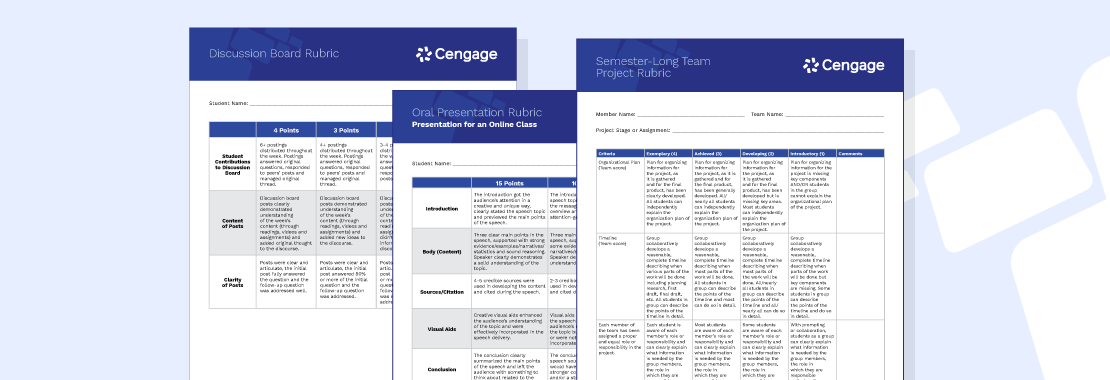Colleen Zajac is a Senior Copywriter at Cengage with a zest for learning. She loves rock climbing, mountain biking and coffee—not necessarily in that order.
According to the National Center for Education Statistics, 84% of undergrads had their classes transition to online in 2020 due to the pandemic.
However, in a Lumina-Gallup survey conducted in 2020, 44% of undergraduate students who transitioned to online learning felt the quality of education was slightly worse than before the pandemic, while 16% found it to be much worse.
With the rise of online learning, instructors feel the increasing pressure to build an online-specific course structure that provides students with a clear curriculum and a meaningful evaluation and improvement process. Instructors are turning to tools and online aids, including rubrics, to maintain a high quality of learning and to meet the increasing demands of higher education students learning online.
What Is a Rubric?
Put simply, a rubric is a scoring guide. It is an assessment tool that instructors can use to map out specific criteria for grading student work.
A well-designed rubric is highly beneficial for assessing student performance—especially in written work for online courses. It should include explicit task descriptions, a scoring scale with levels of performance and gradations of quality.
Why Use a Rubric?
While a rubric is primarily used for the assessment of student learning, its benefits extend beyond that for both instructors and students. A rubric clarifies assignment criteria, applies consistency standards across assignments, facilitates clear feedback and simplifies grading.
Rubrics can help students understand course objectives, identify expectations of assignments and evaluate work based on transparent feedback.
Designing and structuring a rubric from scratch for the first time can take instructors a great deal of effort. Thankfully, trusted sources have already done the work and offer proven, reliable templates to save you time.
We have three key downloadable rubric templates that you can leverage for your courses. Our rubrics have been carefully authored by experienced, OLC-certified educators:
- The Oral Presentation Rubric assesses the organization, content and delivery of your students’ oral presentations.
- The Discussion Board Rubric helps you assess your students’ contributions to online discussion boards.
- The Team Project Rubric lets you track your students’ progress in team projects.
Start Using Rubrics
As the state of online education shifts and grows, your top focus remains the same: your students.
Rubrics are valuable assets that not only help faculty but also benefit learners. By adding rubrics into your online course, you can reduce student confusion about course expectations and assignment objectives, while improving feedback and ultimately student performance.
To start using rubrics in your classes, download our set of rubric templates now.

